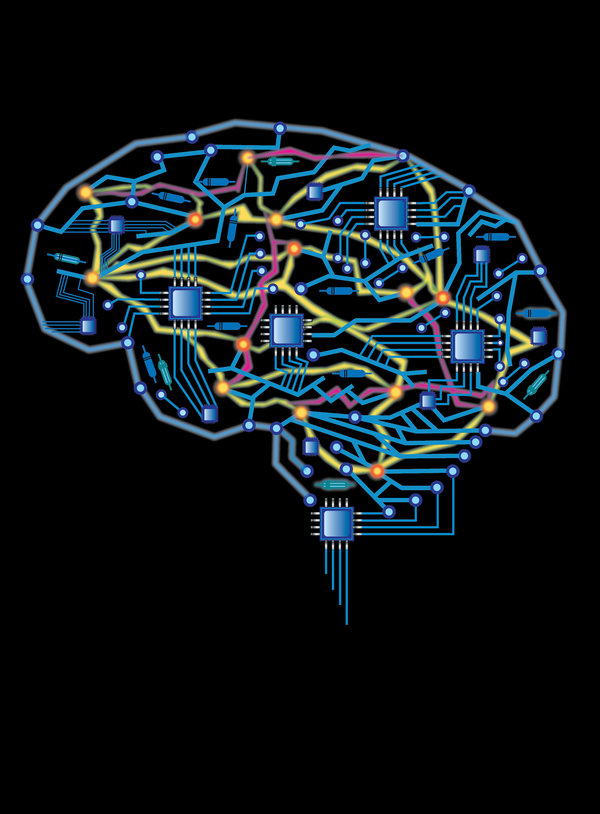Imagine if the pullover you’re wearing automatically adapted itself to the temperature, warming you if you were shivering, or cooling you down if you were sweating. This means that the pullover would have to learn to recognize your discomfort and alter its properties so as to counter this discomfort. Other potential functionalities could include rapid drying or cushioning a fall. But how can such a pullover be created? What energy would it need? And where would it get it from? Complex calculations and a suitable energy source are necessary to fulfill all these functions.
In contrast, nature produces such fascinating functionalities apparently effortlessly. One counterpart to the pullover, for example, is the largest human organ—skin. The skin protects us from influences in our surroundings such as radiation, pressure, friction and the incursion of pathogens. It can even heal itself after an injury. It also provides protection from heat loss and is able to cool us down by secreting sweat.
Inspiration from the human brain
The human brain has long been a source of particular fascination and inspiration for researchers. Countless parallel processes between approximately 100 billion neurons result in enormous computing power with very low energy consumption of only about 20 watts. This massive parallel processing supports cognitive skills in which we far surpass conventional computers. For example, we recognize the familiar face of a friend within milliseconds, while a computer needs far more time for such tasks. Inspired by this superiority, researchers are developing unconventional computing paradigms that imitate the way the brain functions as a means of creating artificial intelligent systems for cognitive tasks.
But what is intelligence? In the psychological sense, intelligence is understood as the ability to adapt in changing surroundings and to learn from past events. As far as matter is concerned, we define intelligence very similarly. Synthetically produced matter is intelligent if it interacts with its surroundings and receives and reacts to impulses. Matter can process feedback, store information as experience and learn from the past. Whether matter is capable of perception is a moot point, although it doesn’t need to do so for our definition of intelligence.
Intelligent behavior of synthetic matter
The central question is: How can intelligence be created in a synthetic matter, and what components are necessary? To this end, we identified four necessary units that have key functional elements and must work together. First, a sensor element is necessary so that the matter can register impulses and information from its surroundings, as well as receive feedback signals. As a response to external stimuli, synthetic matter can change its physical properties—for example, its shape or stability. For this purpose, an actor is needed. Information received is stored as knowledge in a storage element so that it can be retrieved at a later stage. This power of recall is indispensable for any learning process. Finally, these three elements need to be able to communicate with one another, for which a network consisting of signaling pathways is necessary.
All four of these key functional elements have to work together in order to create intelligent skills. Now, imagine that these interlinked elements can be scaled to the nano-level, so that they can be seen as one entity, or piece of matter. This makes integration in a system possible, as a result of which computing processes can be implemented within the matter itself. In this scenario, there is no central processing unit controlling and directing processes, as is the case with conventional computers or robots, for example. Rather, the matter itself is used to compute in a decentralized way. As a result, countless processes can run in parallel, as in the human brain, which makes an enormous amount of data processing possible—such as would be necessary for the ‘intelligent pullover,’ for example.
New study investigates photonics for artificial intelligence and neuromorphic computing
More information:
C. Kaspar et al, The rise of intelligent matter, Nature (2021). DOI: 10.1038/s41586-021-03453-y
Provided by
University of Münster
Citation:
The rise of intelligent matter: Taking cues from nature to develop smarter tech (2021, June 17)
retrieved 17 June 2021
from https://techxplore.com/news/2021-06-intelligent.html
This document is subject to copyright. Apart from any fair dealing for the purpose of private study or research, no
part may be reproduced without the written permission. The content is provided for information purposes only.
